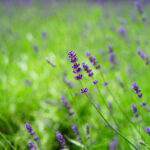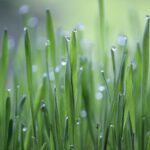Nauraa Hohotti – Colorative Descriptive Verb Chains
When we want to express in what manner or with what emotion an action is done in Finnish, we have multiple ways to do so. We can add adverbs for example (e.g. nauraa iloisesti) or use the essive case (nauraa surullisena). In addition, there is the nauraa hohotti -sentence construction.
Verb chains like nauraa hohottaa (“to belly laugh”) and kuolla kupsahtaa (“to die suddenly”) are typically only used in novels and other works of fiction. It’s a style choice. We call this type of expression a colorative construction. This is because it adds color to a neutral verb by letting us know more about the manner in which it is done.
If you’re only a beginner, it is definitely too soon to learn these expressions. Even if you’re an intermediate learner, you will find little use for these. As an advanced learner, you should be able to understand these, but unless you’re going to write novels in Finnish, you will have limited use for them.
1. General Construction
In this article we will be looking at verb chains (e.g. nauraa hohotti), where
- one neutral verb expresses an action (e.g. nauraa “to laugh”) – the main verb,
- while the other descibes the quality of that action (e.g. hohottaa “crude and boisterous laugh”) – the colorative verb
These two verbs have to be located right next to one another. The main verb is usually not conjugated. It appears in its infinitive, while the descriptive verb will be conjugated. Many of the examples below have been conjugated in the past tense because that’s how they’re mostly found in literary works.
| Phrase | Main verb | Additional meaning |
|---|---|---|
| Me [nauraa hohotimme]. | We laughed. | Crude and boisterous |
| Isä [nauraa hörötti]. | Dad laughed. | With a deep voice |
| Me [nauraa hekotimme]. | We laughed. | Happily, pleased |
| Tyttö [nauraa kihersi]. | The girl laughed. | Quietly, giggling |
| Nuoret [nauraa räkättivät]. | The youths laughed. | Ugly, mocking |
| Ystäväni [itkeä pillittää]. | My friend cries. | Bawling, blubbering |
| Vauva [itkeä vollotti]. | The baby cried. | Loud, wailing, blubbering |
| Mies [seisoa toljotti]. | The man stood. | Gaping, goggling |
| Olemme [istua nököttäneet]. | We’ve been sitting. | In one place, not moving a lot |
| Me [istua kyyhötimme]. | We sat. | Squatting, in a small, sad way |
| Karhu [kävellä löntystää]. | The bear walked. | Slowly, clumsily, lazily |
| He [juosta vilistivät]. | They ran. | Quickly, small steps, scuttle |
| Hän [juosta laputtaa]. | He runs. | Quickly |
| Me [mennä jolkutimme]. | We went. | Jogging, running slowly |
| Hän [kulkea tömisti] ohi. | He passed by. | Loudly, stomping his feet |
| Linnut [lentää laapottivat]. | The birds flew. | Flapping their wings quickly |
| Hän [lyödä läimäyttää]. | She hits. | Creating a slamming sound |
| Isä [tulla harppoi]. | Dad came. | Walking in big strides |
| Isä [tulla tarpoi]. | Dad came. | Trudging, slogging |
| Akka [puhua lavertelee]. | The hag talked. | Blabber loudly |
| Naiset [puhua pälpättivät]. | The women talked. | Blabber quickly, excitedly |
| Lumipallo [pudota lätsähti]. | The snowball fell. | Creating a soft, wet sound |
| Puu [pudota mätkähtää]. | The tree falls. | Large object, fairly quiet sound |
2. Diversions from the General Rule
2.1. Conjugating both verbs
It is also possible to have both verbs be conjugated. We can say both “Hän mennä jolkutti” and “Hän meni jolkutti” (He ran slowly, jogged). However, it is good to know that this is a deviation from the general rule. This happens especially common in some dialects.
Interesting is that, when someone has died suddenly (“pop off”), we regularly use the phrase hän kuoli kupsahti with both verbs conjugated. The examples below can also appear with the main verb in its infinitive and the colorative verb conjugated.
| Phrase | Main verb | Additional meaning |
|---|---|---|
| Te [istutte nolotatte] tässä. | You sit here. | Embarrassed, ashamed |
| Se [on juossut hölköttänyt]. | It has run. | Trotting, jogging |
| hän [juoksi vilisti]. | He ran. | Scurrying, fast with small steps. |
| Hän [kuoli kupsahti] | He died. | Suddenly, whoops! |
2.2. Changing the order of the verbs
Usually the main verb (the one that is conjugated) will appear after the infinitive verb (e.g. nauraa hohotti). However, in Savonian dialects (maybe influenced by Estonian) the main verb can come first (e.g. vilistää juosta or juosta vilistää “they ran with quick small steps”).
2.3. Using the colorative verb on its own
The descriptive verbs can also appear independently without a main verb. There are certain verbs that sound more natural in the colorative construction and others that sound better when used alone. For example, the verb hihittää (to giggle) can be used as part of a colorative construction (Hän nauraa hihittää), but it is arguably much more natural on its own (Hän hihittää).
| Phrase | Main verb |
|---|---|
| Avanto [tupsahti] täyteen lunta. | The ice hole was softly filled with snow |
| Hän [kaatua tupsahti] hankeen. | He fell softly, in e.g. the snow. |
| Hän [kihertää] ujosti. | She giggled shyly. |
| Hän [nauraa kihertää]. | She laughed in a shy, quiet way. |
3. Learn More
As always, Google is your friend, so you find more sources to read more about this topic if you want to. Here are the terms you could be using to do so:
- colorative verbs / serial verbs / descriptive verbs / colorative construction
- koloratiiviverbi / koloratiivikonstruktio / koloratiivirakenne
The sources I used myself are:
- A thesis on verbs related to laughing and crying
- A research article on the colorative construction
- A thesis on expressive and colorative constructions in literature
- An old article on descriptive verbs




